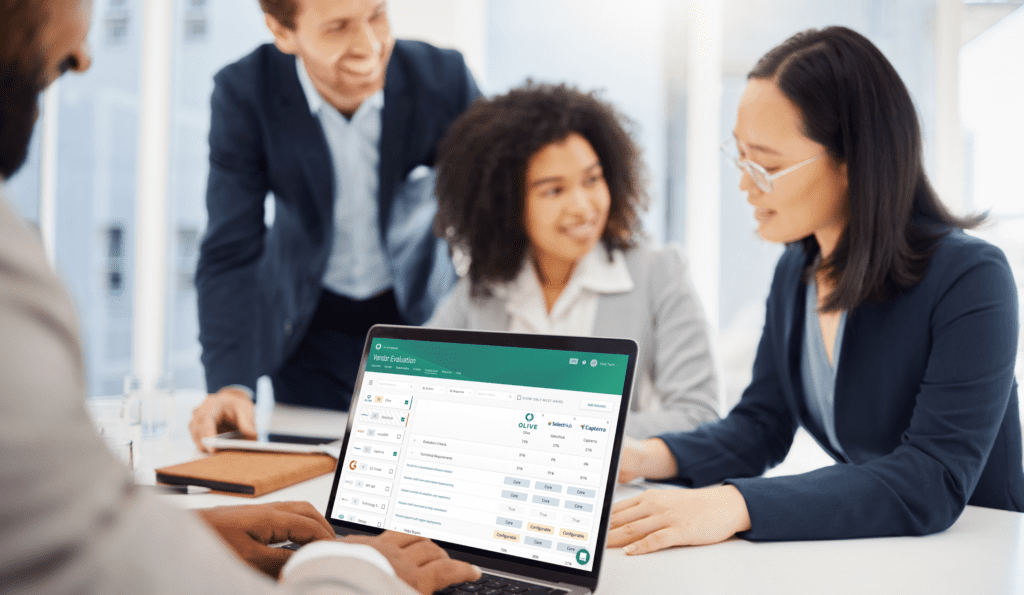What is Enterprise Data Warehousing Software?
Enterprise Data Warehousing Software is a specialized software designed to facilitate the storage, integration, and analysis of vast amounts of structured and unstructured data from various sources within an organization. This software serves as a central repository, or data warehouse, where data from different departments, systems, and databases can be collected, organized, and made accessible for reporting, analytics, and business intelligence purposes.
What is the Main Purpose of Data Warehousing Software?
The primary goal of Enterprise Data Warehousing Software is to provide a unified view of an organization’s data, making it easier for business users, analysts, and decision-makers to access and analyze data consistently and meaningfully. It enables organizations to run complex queries, generate reports, and gain insights into their operations, customers, and market trends, leading to better decision-making and more informed strategies.
Today’s digitized economies have vaulted the importance of data warehousing software. Business Intelligence software almost relies entirely on your ability to maintain accessible, accurate records. However, the right warehousing solutions often seem to be awkward to locate. It’s just like going to a food counter but the foods you like are not on the menu, even if they are served.
Digital transformation managers and CIOs are experiencing the difficulties and inefficiency of the process all too often. Clients often report an exhausting 12 – 24 month process that still doesn’t render the perfect software. Significant cost savings, personnel productivity, efficiency improvements, and important customer insights are being lost daily.
While the process should be as easy as identifying your needs and parameters, finding a list of options, and choosing from top-quality alternatives, it is not that simple in actuality. Vendors sometimes overpromise and try to sell their technology, whether suitable or not. Market comparison evaluators offer you their paying providers regardless of fit and despite other more appropriate options existing outside their platform.
Individual agendas damage trust between purchaser and supplier. This is why Olive steers clear of conflicts of interest and paying influences so we can stay unbiased. We listen to your requirements and survey the market with your interests as our guide. Our approach is slashing the procurement process by months and years in some cases. Time wastage is trimmed out by listening and not bringing you ill-fitted options.
How to Choose the Right Data Warehousing Solution for Your Business Needs
Any large-scale software purchase comes with inherent risks to careers, finances, and operations. The exhaustive process leaves purchasers looking for faster alternatives and potentially cutting corners. Unfortunately, this can be a dangerous step leading to the wrong decisions being made. The software selection process should always include the following steps:
1. Ascertain your data warehouse needs and priorities
Cloud warehouses are built with the hope of applying to all types of industries but what some vendors fail to appreciate is the individuality of each company. You may have an entirely different plan for a prospective vendor’s target market, so straightening out your requirements is the place to start.
– What data are you trying to collect and how much memory do you need?
– What is your plan for the data captured and stored?
– Do you need a relational or non-relational database?
– How readily available will the data need to be? Do you need real-time analytics?
– What is the level of security required?
– What extra features will you need from your warehousing choice?
– Who needs access to the data and how many people need to use the warehousing system at once?
– Will your data warehousing system need to work with other software?
Knowing your requirements is part of the battle, but deciding priorities is vital. Warehousing solutions must hit your number 1 to be adopted and useful. Try to rank the priorities so you know the essential capabilities from the luxury attributes.
2. Scan the Market and Generate a Long List of Vendor Options
Answering your internal needs helps decipher who fits the bill in the market. Add potential suitors based on a surface-level investigation before delving too deep. It is best to cast a wide net in the beginning to capture a variety of options and potential features you may have overlooked.
Any search of anything nowadays starts with internet searches so mentioning that is redundant. Tech magazines, competitors, comparable industries, and market evaluator websites are great places to expand your list, but keep in mind vendors pay to get discovered here.
3. Evaluate and Shortlist
Now it starts to get tricky. Finding a range of data warehouses is the explorative part. However, whittling down to a shortlist of 3-5 options can be challenging especially if you have opened lines of communication with prospective suppliers. Not that it’s a bad thing by any means.
What is of utmost importance is always to put your primary needs first. It might seem like a no-brainer but distractions are easy to come by with fancy new bonus features flashed in front of buyers now.
Filtering out options usually begins at the budget. What can you realistically afford from initial capital to ongoing maintenance costs? Be aware that vendors do not bill you in the same way. Some require a retainer, some impose longer-term contracts and some offer a one-time capital expense. Know what each contract means for you.
It bears keeping in mind the potential ROI you are hoping for and the value your software might bring. If you need to flip the script, what financial benefits would you lose by not purchasing individual options? Apart from the financial filter, you likely need to employ the following:
– Priorities – Is my number 1 priority satisfied?
– Accessibility – Will the intended users get what they need when they need it?
– Compatibility – How does this option work with others?
– Agility – Is the data warehouse flexible enough to work with you if you innovate?
– Customer service – If your team encounters issues, will there be someone to call?
– Reputation – What has been the experience of others?
– Bottom Line – Does this option improve your business?
4. Making Your Choice
Do what you can to pare the shortlist down to 5 at most as the final selection piece can be time-consuming.
In making your choice, recruiting teammates and end-users to review the options is often best. Logically, the end-user is most important and without their buy-in, the implementation phase becomes increasingly difficult.
A preliminary reputation investigation is suggested above but becomes even more crucial in the final filtration. Online reviews from Google, YouTube, Tech Crunch, or any place you can find them will unearth some info, but it won’t give you everything. These are a start. Back channeling references by finding customers on linkedin and reaching out is an awesome way to get the real info. If particular vendors were suggested to you, ask the contact why? If you know certain companies use the data warehousing you are looking at, reach out and ask them: how well it suits their needs and what the vendor has been like. Doing the research makes a huge difference.
Finally, request a demo. Have each hopeful take you and at least two other team members for a test drive to see what this baby can do. If you need your software for collecting and collating emails, social media analytics, content, and other forms, a relational database might not be for you. Keep your needs in view at all times and test the vendor.
– Are they showing you all of the things it can do or how it resolves your issues?
– Did a vendor show features you overlooked and could answer your prayers?
– Who called you afterward to see if it was a match?
– Who was helpful and who was selling?
Have a frank discussion with your team on what your favorite options were. Honesty about the fit to your requirements is most important. A vendor might take you for dinner or butter you up, but your team and requirements are the questions you need to answer.
Features to Look for in Your Data Warehouse
Key features of Enterprise Data Warehousing Software may include:
- Data extraction, transformation, and loading (ETL) processes to gather and integrate data from multiple sources.
- Data modeling to structure and organize the data for analytical purposes.
- Data security and governance measures to ensure data integrity and compliance with regulations.
Data Warehousing Benefits
Data warehousing offers fantastic flexibility and storage in markets decided by information. The more informed your decision-making needs to be, the more likely you need an effective solution. If you are still unsure, ask yourself if you need any of these benefits:
– Storing your essential data in one accessible place
– Analyzing your web, mobile, CRM, and other software
– Providing multiple people access to the same data at the same time
– Improving historical understanding and forecasting insight and analytics
– Increasing consistency and conformity of data
– Boosting efficiency and security
– Leveraging Business Intelligence Reports
– Growing ROI
“Data warehousing is revolutionizing the way people perform business analysis and make strategic decisions” – Paulraj Ponniah
Olive Isn’t About a Quick Sale, It Is About Streamlining the Achievement of Your Potential”
For longer than should have been the case, the power dynamic was skewed in favor of sellers. Olive is giving the power back to you, the buyer. We appreciate that the process may have been tedious and perhaps even untrustworthy, but we have taken steps to eradicate historical issues.
Olive helps you investigate your needs, drilling into how you want to leverage your potential data warehouse and who the intended users are. Studying your own needs and comparing solutions to them allows us to approach the market from your point of view. Olive can sift through the BS and find dedicated solutions efficiently without the bias or influence of pay-to-play vendors. We believe in full credibility catered to your needs delivered on a timeline that suits you!




